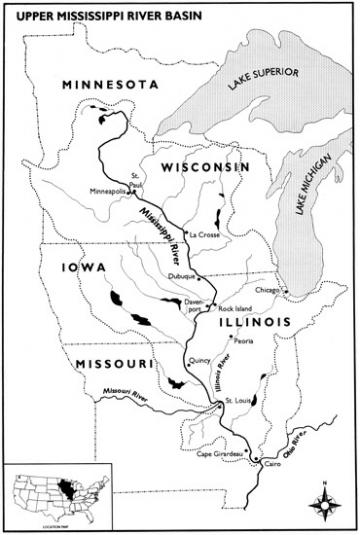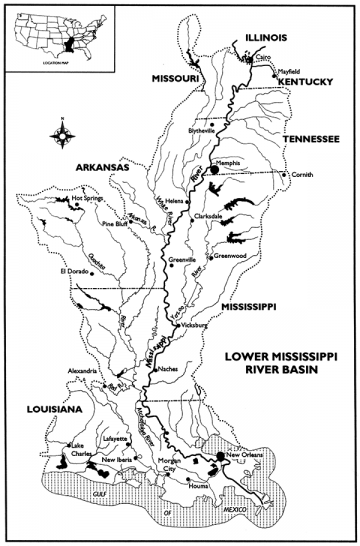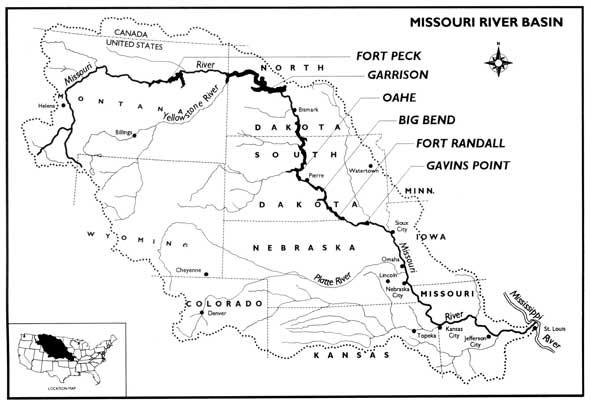The department coordinates issues relating to major river basins that affect Missouri, and provides technical support for negotiations and litigation actions to protect the state’s rights to this water.

Missouri is located in the center of the United States. We not only share water with the eight states along our border, we share water with a total of 26 other states (as either an upstream or downstream state) and two Canadian provinces. To ensure Missouri's interests are considered, the department represents Missouri on water resource issues that traverse political boundaries. Interstate waters include the Mississippi, Missouri and White rivers and their basins.
A river basin is the total land area drained by a river and all of its tributaries. It is customary to subdivide basins by tributary. For example, the Grand, Osage, Chariton and Gasconade watersheds are sub-basins of the Missouri River basin. In the Mississippi basin, the Missouri, White and Arkansas are sub-basins that drain the various parts of the state of Missouri. The Mississippi is subdivided into the Upper Mississippi and the Lower Mississippi.
Rivers may be used as political boundaries, as in the case of Missouri and Illinois, but basin boundaries, or divides, are not generally used as political boundaries. Therefore, river basins have no respect for state lines. However, river basin boundaries are recognized in dealing with interstate water issues. In calculating the water resources Missouri citizens have a right to use and enjoy, we use river basins as convenient planning units. It is in this context that Missouri lays claim to a fair share of water that flows – for example – from the hot springs of Yellowstone National Park into Yellowstone River, which flows into the Missouri River near Williston, North Dakota. In like manner, Missourians share part of the waters of Lake Itasca, the source of the Mississippi River.




